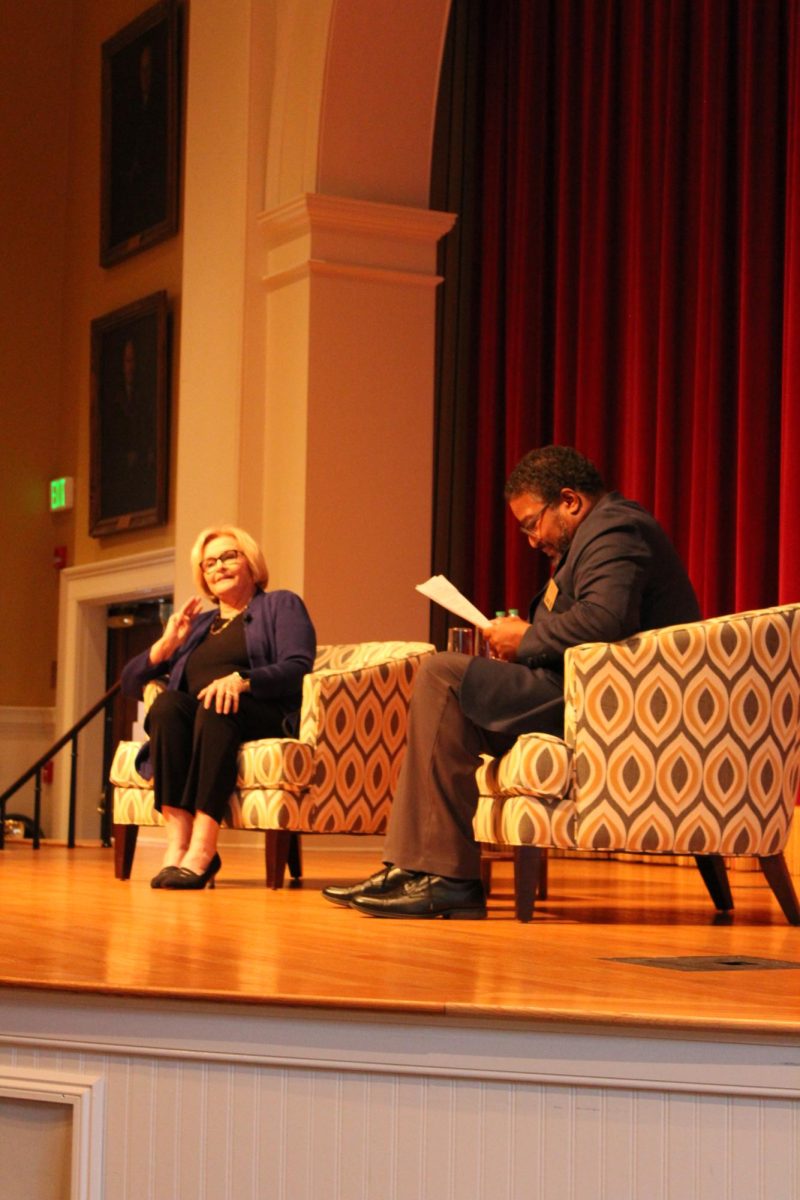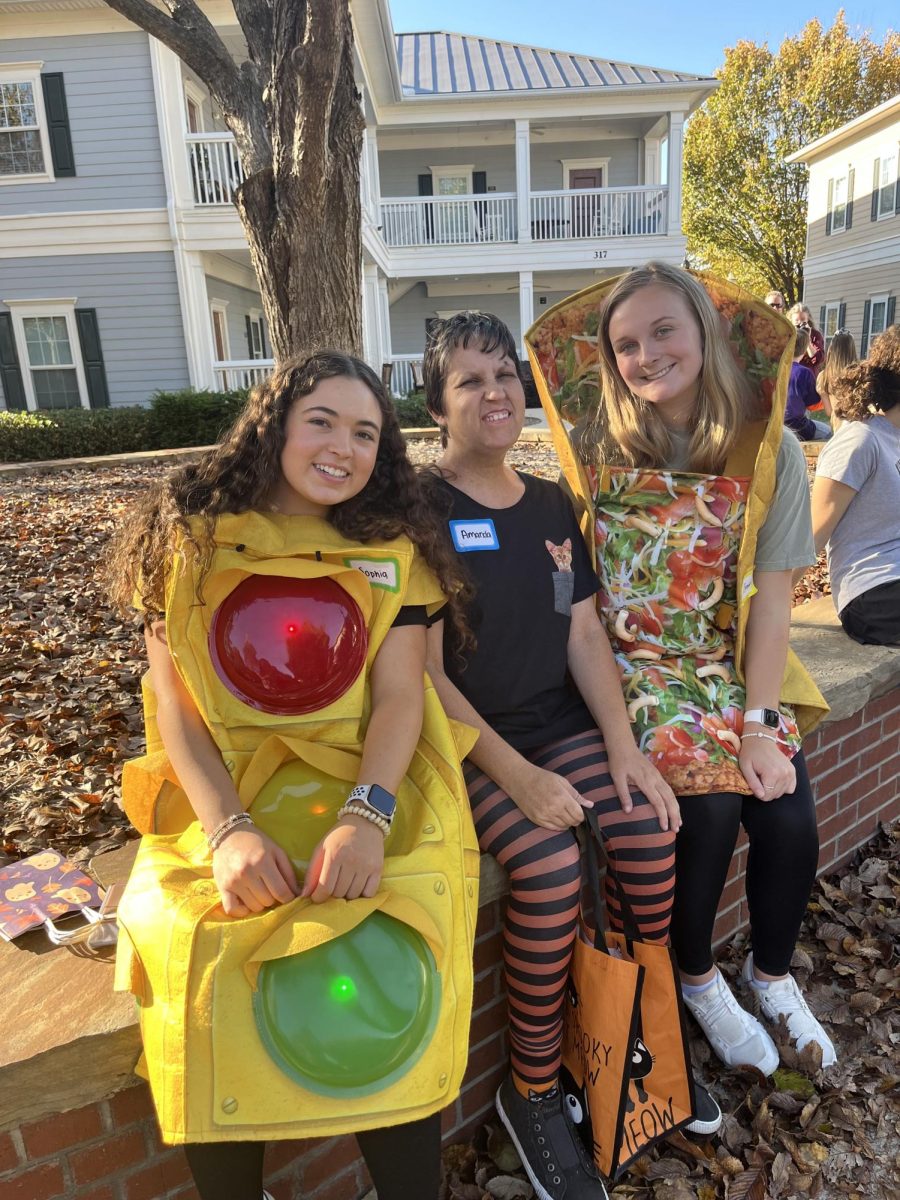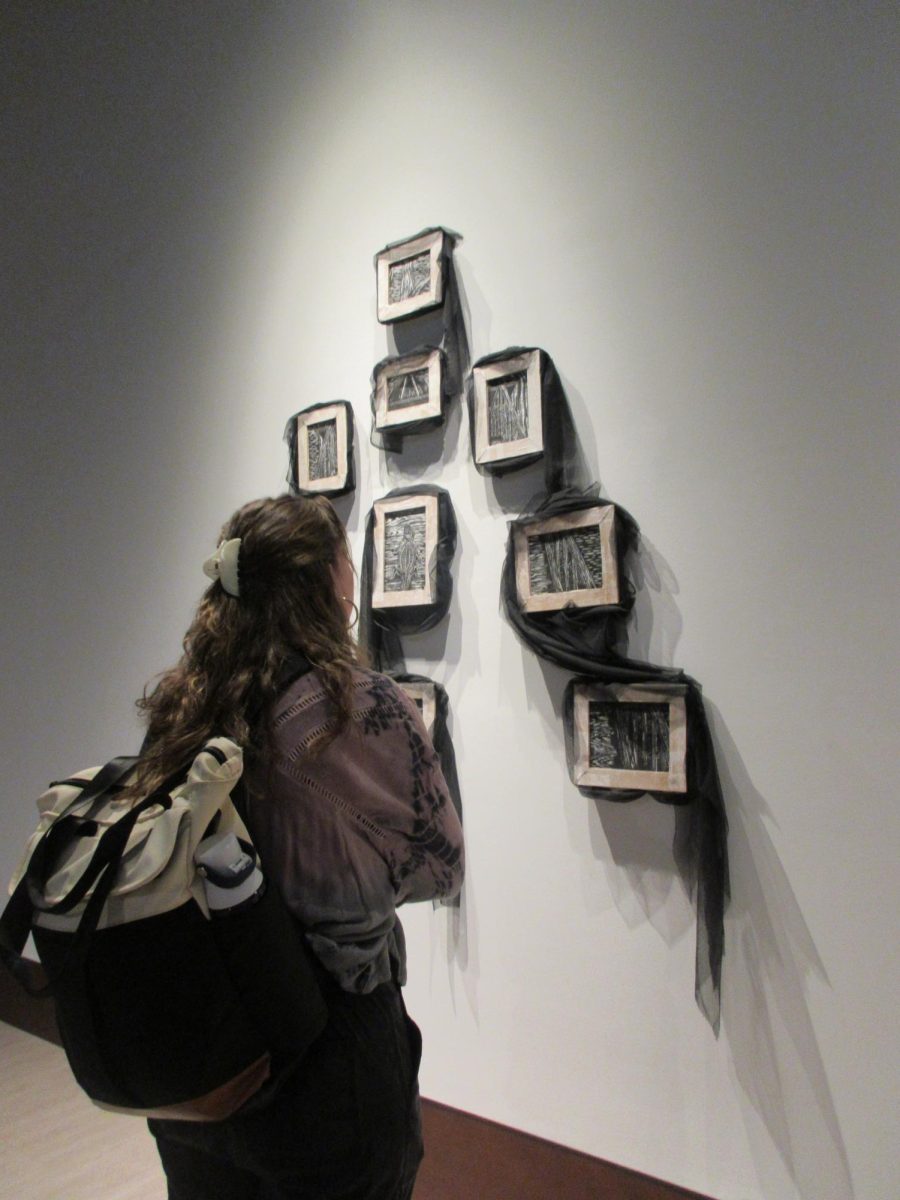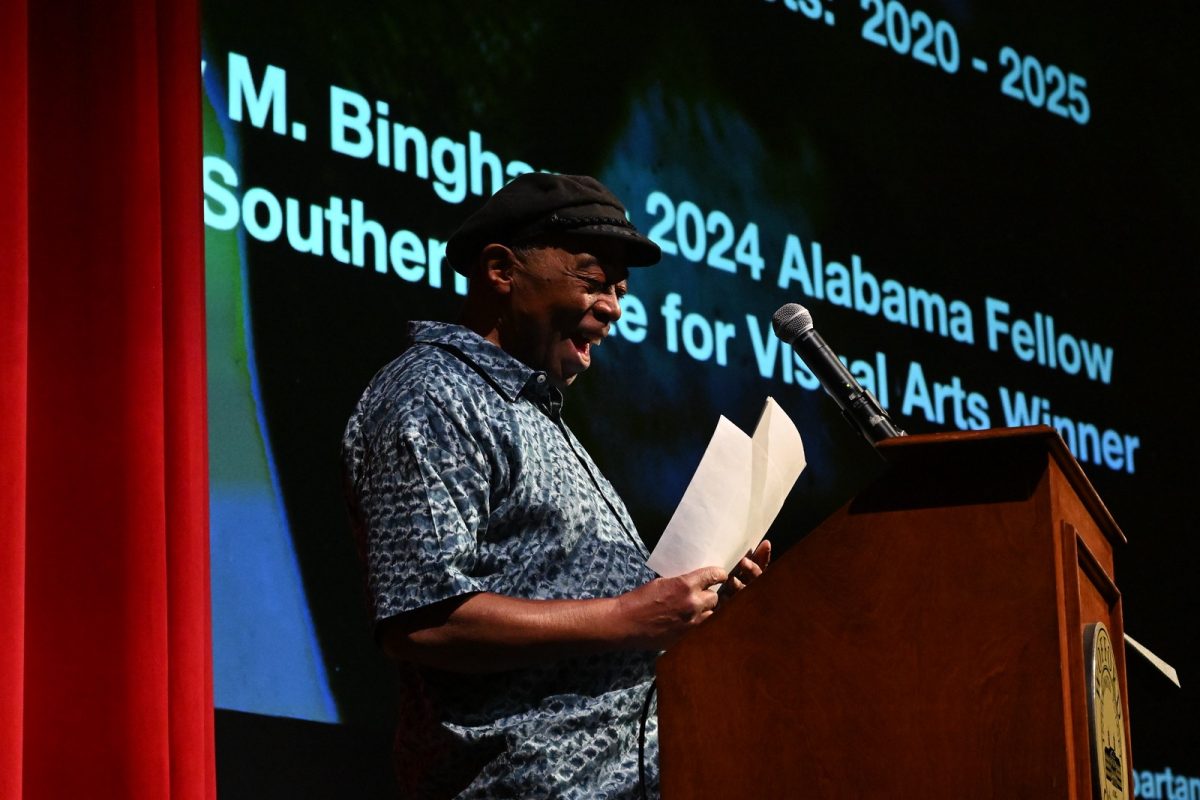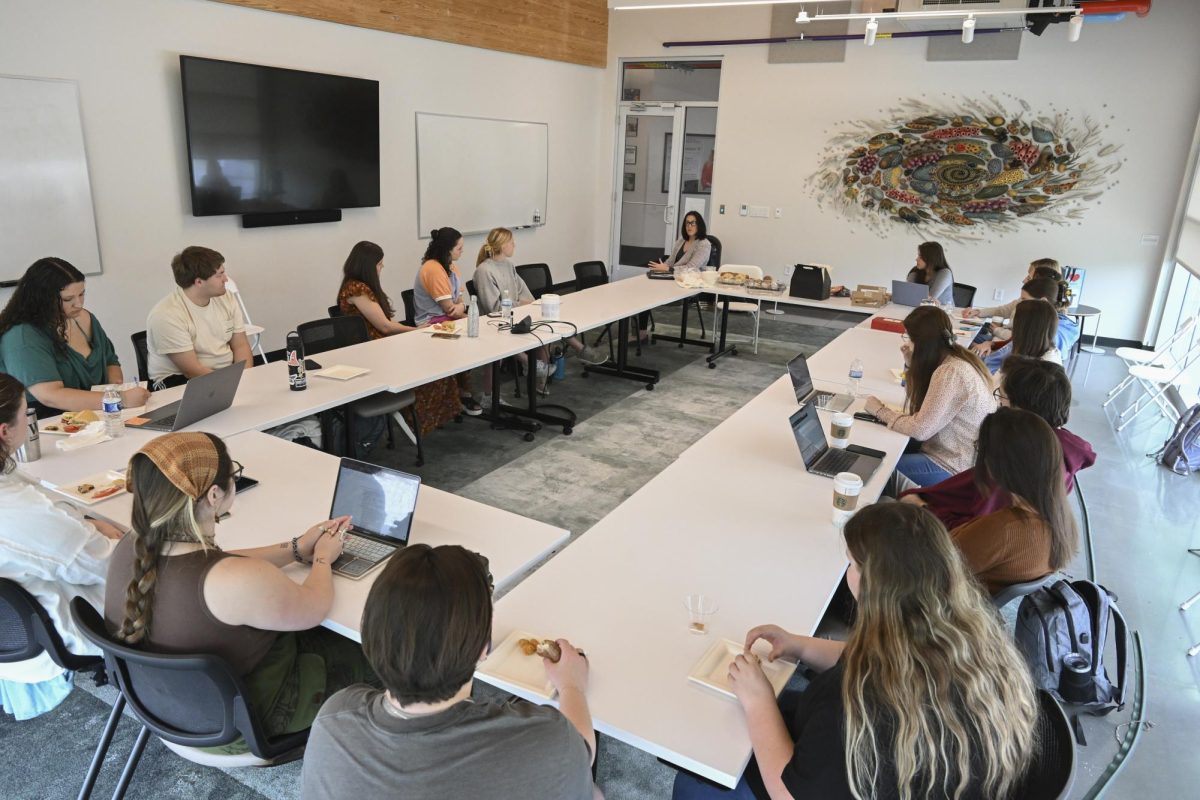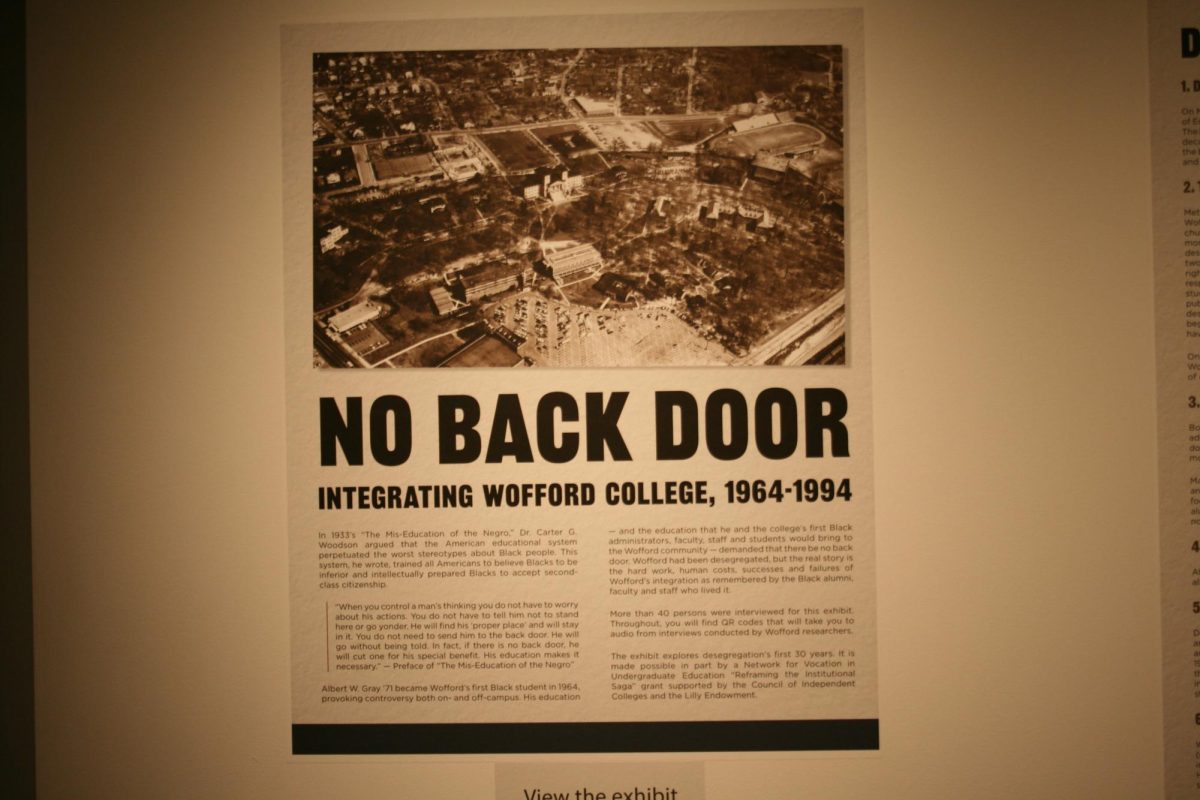Three years ago, Steele Smith wrote an article for the Old Gold and Black entitled “Student opens up about racially motivated incident on campus”. Smith revisits his piece and considers what it means for Wofford’s campus today.
I was invited to reflect on a piece I wrote in 2017 as a student at Wofford and staff writer for the Old Gold and Black. The article details an incident during which a white female student directly called one of my fellow Class of 2019 members a nigger. Now more than ever we must examine what it means for an institution built by slaves in the 1850s, whose doors opened to Black men over 100 years later, to have an incident where a white student directs a racial slur at a Black student in 2017. We must reflect on what it means that a student who displays such overt racism is allowed to continue their education at Wofford. We must consider what it means that this student only faced consequences as a result of the continued personal efforts of the Black student who himself had been verbally assaulted.
The Wofford website states, “N.C. Records indicate that a number of enslaved persons were on the various construction teams; among them were skilled carpenters who executed uniquely beautiful woodwork, including a pulpit and pews for the chapel.” This is all the information offered by our institution on the slaves whose unpaid labor was used to build the original buildings of Wofford College. While teaching about the history of chattel slavery is severly lacking in many, if not most, of our educational institutions, this is a critical piece of the history of this College. One of the critical foundations of this school was enslaved Black people working for free to build an institution for the education of the white elite.
A 2017 APM Reports article by Kate Ellis and Stephen Smith explains, “To date, there is no single accounting of how much money flowed from the slave economy into coffers of American higher education. But Wilder says most American colleges founded before the Civil War relied on money derived from slavery. He suspects that many institutions are reluctant to examine this past.” Wofford is a pre-Civil War institution constructed by slaves. In response to my own inquiry about the Black enslaved people used to build the first building on campus, Wofford Archivist and Adjunct Professor Dr. R. Philip Stone II, states, “While we do know that the contractor who built Main Building, Ephraim Clayton, did use the labor of enslaved persons to build the buildings on campus, as far as I know, we don’t know the numbers, or names. Clayton probably would have kept those records, but the college did not.” Instead of names and a true acknowledgment of the humanity of these persons, we have a patch of exposed brick dedicated to those who built this institution. Until recent student led research, no further efforts were made to know them. This past, while woefully unexplored, is undeniable. Slavery was more than just human bondage, but a system that has influenced every aspect of American thought and culture since its inception and introduction in the American colonies in 1619.
In 2020, Black, Indigenous & people of color (BlPOC) have redoubled our efforts to eliminate racism that is both systematic and institutionalized. While my article as a student brought to light only one incident of clear racism at Wofford, in a few short weeks, the @blackatwofford Instagram page, created by current Wofford students, has given a platform for over 200 stories from Black students, alumni, faculty, and staff who have also had similar experiences with racism on our campus. Despite numerous detractors, the account remains, and is a testament to the fact that we will not be silenced; our stories will be heard,and we will demand change.
The problem I have with Wofford is not its history of racism, but its continual refusal to acknowledge and cut out those aspects of its culture swiftly and emphatically. To say that I am surprised, would be false. It is never a surprise that an institution with racist origins still has roots deeply set that refuse to shift. This understanding leads me to ask questions. What is it that you have to preserve by letting a student who exhibits overt racism maintain their status as one of your students? How does this add to the academic prestige of your institution? Who are you signaling to with this lack of decisive action? One of the answers lies within the fact that racism is much more about power than it is about ignorance. It is clear who has power at Wofford when an act that is so directly malicious can be handled in this way. To be clear, I am not saying the person who exhibited this racism is irredeemable, but I am saying that the location of their potential redemption should not be this place of academic study.
A key issue I have with the way Wofford handled this incident, is that they allowed the burden of responsibility for educating and understanding the problem with this sort of racism to fall on the Black student who it was perpetrated against. Racism in all its forms is deeply traumatic and dehumanizing. Black people are constantly learning to recognize, understand, and stand against the impacts of white supremacy in ourselves and our communities. Especially while in the midst of life and a full course load at a rigorous institution, this type of personal reflection and emotional labor is difficult. Why was the work to address this problem placed on the Black victim’s shoulders? Why did he have to organize events to make people talk about what was going here? This shows a lack of commitment to eliminating racism on campus, or a lack of understanding of what actions to take, both of which I find unacceptable. Those of you, specifically white people, who read this article need to understand that every act of anti-racist education that BIPOC, and in this particular case—Black people especially, provide you with is often work we are doing for free to try change a society and a culture that is broken at its core and fixed in opposition against us in numerous, very tangible ways. Moreover, we have been doing this work for generations, and while it is now more important than ever, understand that we have been lifting our voices. You have simply not been listening. Now is your chance.
The way Wofford handled this situation is exactly how this country handles racism within its police forces and any other organization you could think of. They tell us to be tolerant or that they stand with us only to continue to stab a knife in our backs by allowing that racism to continue to have a place amongst us. I observe that this course of action at Wofford preserves its long-standing culture as an academic playground for students with a predominantly white upper class background. Clearly, white people don’t come to Wofford to be challenged in their way of thinking about the world. For many of my classmates, it took 4 years just to begin to acknowledge any sort of humanity in their Black peers, and that is the bare minimum amount of understanding anyone can have. There are those that say, “If you don’t like it, leave.” To that ignorant statement I say: There isn’t much in this country that was not derived from, stolen from, or built by Black people. This is abundantly clear in Wofford’s history. Who are you to tell me or any other Black person that we should give up a seat at the table that we built? While we do make our own spaces and build our own institutions that isn’t enough to allow us to escape the effects of systemic racism. It simply cannot be allowed to exist or propagate.
The burden of institutional change is not on Black people. Yes, we have to push for it the hardest because it disproportionately affects us, but we, in the case of Wofford College, are not in many positions of power to leverage change. However, it’s naive to think that a system like this will fix itself. I have no faith in Wofford to change all by itself. However, I do believe that the only way that it can change for the better is if she is genuinely contrite about her past sins and failings and sincerely endeavors to repent, seek forgiveness, and make amends as it moves into the future.
To conclude, real change within an academic institution like Wofford means creating a place that feels different from anything the majority population has ever experienced because our society is built on white supremacy in its many forms. Change is recognizing how one’s ideas and life are a reflection of this colonial ideology and choosing to work against it. If that’s not happening — if you’re not seeing dramatic change, then it’s just racism at work, a continuation and perpetuation of the same white supremacy and racism that Wofford was founded on and has promoted since its inception.
To read Smith’s original article, click here.


